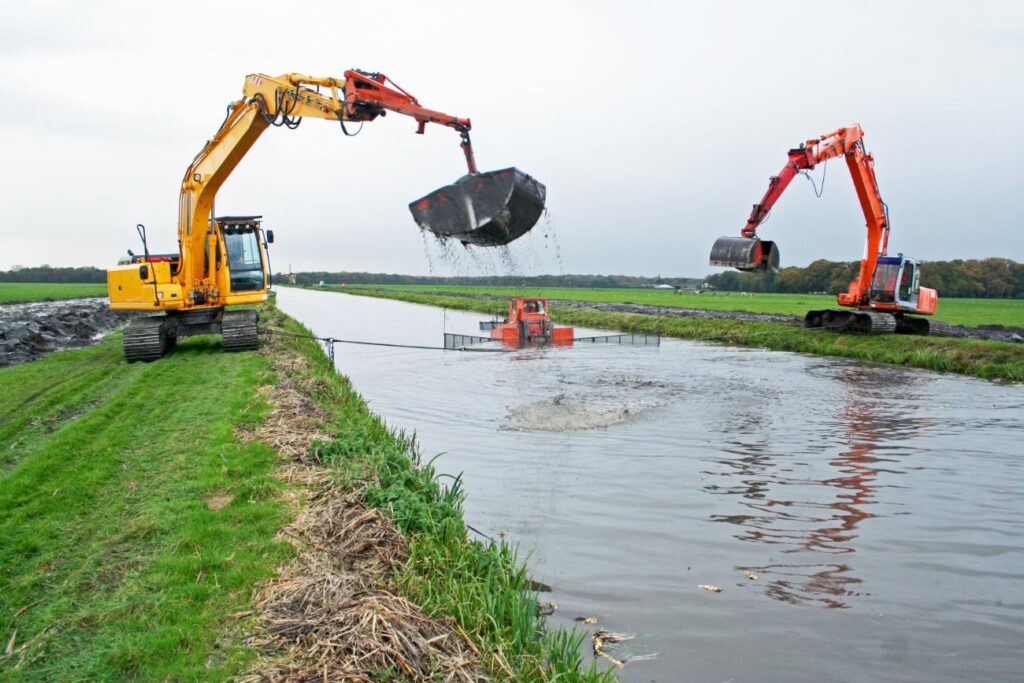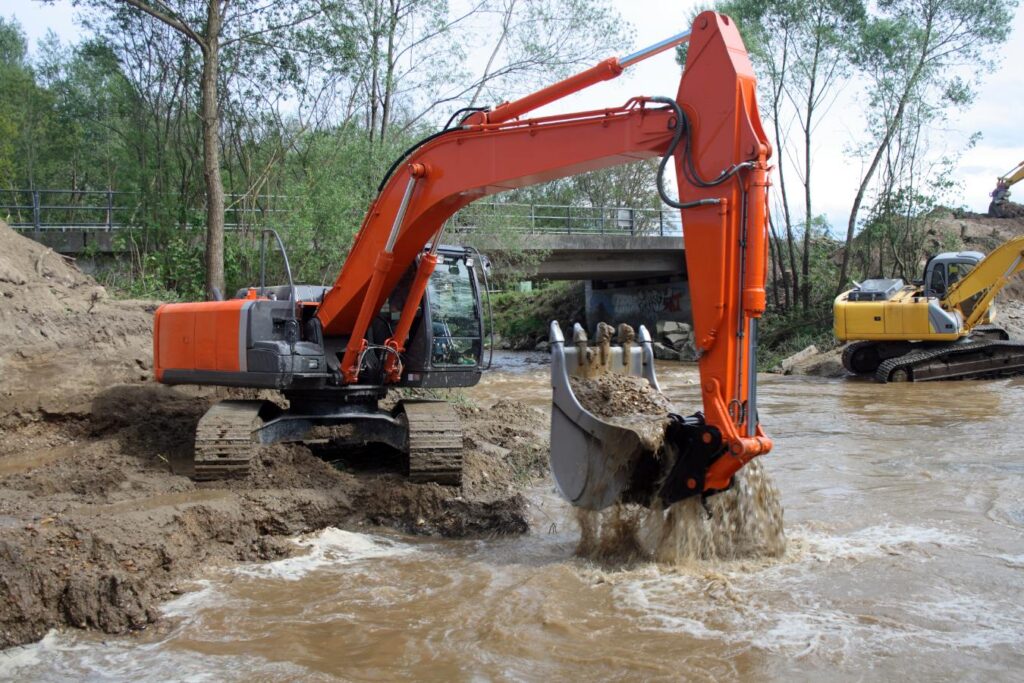Excavator dredge attachments have become an essential component in modern dredging operations due to their versatility and efficiency. These attachments transform standard excavators into specialized dredging machines capable of handling a wide range of sediment types and varying dredging conditions. Whether for lake restoration, harbor maintenance, or industrial excavation, the excavator dredge attachment significantly enhances the excavator’s capabilities, making it an ideal choice for both small and large-scale dredging projects.
One of the most valuable attachments in dredging applications is the excavator dredge pump. These pumps facilitate the removal of slurry and sediment from the water and transfer it to disposal or processing areas, making them critical for efficient material handling. The use of excavator dredge pump systems ensures higher precision and control compared to traditional dredging methods, reducing environmental impact and optimizing productivity.
This article will explore the top applications of excavator dredge attachments, focusing on their roles in projects such as lake dredging, river dredging, and mining operations. By examining these applications, we will demonstrate how the right attachment and equipment can significantly enhance the speed, cost-effectiveness, and environmental sustainability of dredging projects.
What is an Excavator Dredge Attachment?
An excavator dredge attachment is a specialized tool designed to enhance the capabilities of a standard excavator, enabling it to perform dredging tasks more effectively. Dredging attachments allow excavators to remove sediment, debris, and other materials from the bottom of bodies of water, making them essential for a wide range of dredging operations. These attachments are commonly used in lake dredging equipment, river and harbor dredging, and environmental restoration projects, offering a flexible and cost-effective alternative to traditional dredging machines.
There are several key types of excavator dredge attachments, each tailored to specific dredging needs:
- Cutterheads: These are rotating tools attached to the excavator’s arm that help break up compact or tough sediment. Cutterheads are particularly useful in deeper waters or areas with hard materials, such as clay or rock, making them ideal for lake dredging equipment or industrial applications.
- Buckets: These are one of the most common attachments used in dredging. Excavator buckets scoop up loose sediment and debris, and can be adapted for use in both shallow and deeper water environments. These buckets are often used for dredging softer sediments, such as sand and mud.
- Grabs: Grabs are mechanical attachments that enable excavators to lift and remove large amounts of material in a single motion. They are perfect for dredging in confined areas or in situations where precise control is required.
- Dredge Pumps: The excavator dredge pump attachment is a powerful tool used to transfer slurry and sediment from the dredging site to disposal areas. It integrates with the excavator to create a continuous flow of material, ensuring efficient removal and transportation of dredged material.
These excavator dredge attachments integrate seamlessly with excavators, transforming them into highly efficient dredging machines. The ability to swap attachments based on project needs allows operators to tailor their equipment to various sediment types and dredging conditions, making them an ideal choice for lake dredging equipment or more expansive dredging projects. By combining mobility with versatility, these attachments maximize productivity while minimizing environmental impact.
Key Advantages of Using Excavator Dredge Attachments

Excavator dredge attachments offer several significant advantages over traditional dredging machines, making them a popular choice for a variety of dredging projects. Whether it’s a small-scale lake restoration project or a large-scale industrial operation, the flexibility and efficiency of excavator dredge attachments are unparalleled.
Enhanced mobility and flexibility are key benefits of using excavator dredge attachments. Unlike traditional dredging machines, which are often stationary or require complex mobilization, excavators can move freely across the site. This mobility enables quick repositioning of equipment, particularly in areas that are difficult to access with larger, more cumbersome dredging machines. Excavator dredge attachments can be used for a wide range of dredging tasks across various terrains, from shallow lakebeds to confined spaces, providing unmatched flexibility.
Another advantage is cost-efficiency and scalability. Renting or purchasing excavator dredge attachments can be significantly more affordable than traditional dredging equipment, particularly for short-term or smaller projects. Excavator dredge pumps, for example, provide an affordable solution for smaller-scale operations, such as lake dredging or marina maintenance, without the need to invest in costly dredging machines that may only be used intermittently. Additionally, the modular nature of excavator dredge attachments allows businesses to scale operations up or down based on project needs, without incurring unnecessary costs.
Excavator dredge attachments are also ideal for easy deployment in lake dredging equipment or confined areas. These attachments allow for rapid setup and use in areas where traditional dredgers may struggle. Whether dredging small lakes, ponds, or narrow channels, the equipment’s adaptability ensures that even the most challenging sites are accessible.
Lastly, reduced environmental impact is another significant advantage. Excavator dredge attachments, especially when used in conjunction with excavator dredge pumps, provide precise material removal. This precision minimizes disturbance to surrounding ecosystems and reduces the risk of contamination. By using smaller, more controlled equipment, dredging operations can reduce their environmental footprint, which is essential for projects in sensitive areas, such as lakes or wetlands.
Overall, excavator dredge attachments combine mobility, cost-effectiveness, and environmental responsibility, making them an invaluable tool for various dredging projects.
Top Applications of Excavator Dredge Attachments

a. Lake Dredging
Excavator dredge attachments play a crucial role in removing sediment from lakes, helping to restore water quality and improve recreational spaces. In lake dredging, excavators equipped with specialized attachments, such as cutterheads, buckets, and excavator dredge pumps, are used to remove accumulated sediment, debris, and organic material from the lakebed. These attachments allow operators to reach the most inaccessible areas, making them ideal for residential lakes, recreational areas, and environmental restoration projects.
The primary benefit of using excavator dredge attachments for lake dredging is the ability to enhance water flow, reduce sediment buildup, and improve water clarity. For residential lakes, these attachments help remove unwanted silt and muck, making the water more aesthetically pleasing and usable for activities like swimming and fishing. For larger projects, such as environmental restoration, excavator dredge pump systems efficiently transport slurry and sediment, ensuring that materials are moved quickly to designated disposal or recycling areas, thereby reducing environmental disruption.
Common lake dredging equipment includes specialized buckets and excavator dredge pump systems tailored to handle soft sediment and debris in lakes, such as sand, silt, and vegetation. These systems ensure a smooth operation, even in confined or shallow lakebed areas, providing both precision and efficiency in sediment removal.
b. River and Canal Dredging
In river and canal dredging, excavator-mounted dredge attachments are essential for maintaining waterways. Excavators equipped with dredge attachments, such as excavator dredge pumps, aid in deepening and widening river channels, thereby ensuring continuous water flow and preventing flooding. By using excavator dredge pump systems, dredgers can efficiently move large volumes of sediment, which is particularly beneficial for long stretches of riverbeds that need regular maintenance to accommodate shipping or water management.
c. Marina and Harbor Dredging
Excavator dredge attachments are incredibly versatile when it comes to dredging in marinas and harbors, where precision is key. These attachments allow operators to work within confined spaces, such as narrow boat slips and congested port areas. The excavator dredge pump systems play a vital role in port and marina expansion by efficiently removing sediment, enabling safer navigation and better docking facilities for boats. Their ability to handle intricate dredging tasks in tight spaces makes them ideal for harbor dredging, where precision and efficiency are paramount.
d. Mining and Material Extraction
In mining operations, excavator dredge attachments are used to extract minerals and materials from riverbeds or shorelines. These attachments enable miners to access hard-to-reach areas, such as riverbanks or shallow river sections, where traditional mining equipment cannot operate. By using excavator dredge pumps, operators can extract valuable materials from beneath the water’s surface and transport them to processing sites. This process is both efficient and effective, allowing for greater material extraction in challenging environments.
How to Maintain Excavator Dredge Attachments
Maintaining excavator dredge attachments is crucial for ensuring their optimal performance, longevity, and safety during dredging operations. Proper maintenance not only enhances the equipment’s efficiency but also minimizes downtime and repair costs. Below are essential maintenance steps for keeping lake dredging equipment and other dredging attachments in peak condition.
Routine Maintenance for Maximum Performance and Longevity
To ensure maximum performance, regular maintenance is key. This includes cleaning the dredging attachments after each use, checking hydraulic systems for leaks, and lubricating moving parts to prevent wear and tear. Regular inspection of the excavator dredge attachment components, such as the buckets, cutterheads, and dredge pumps, should be performed to detect early signs of damage or excessive wear. Additionally, checking and replacing worn-out seals, hoses, and bearings will help prevent malfunctions during operations.
For lake dredging equipment, the attachments should also be examined for sediment buildup, as this can affect efficiency and cause blockages in the dredge pump or pump lines. Ensuring that the excavator dredge pump is cleaned after each use is critical to avoid sediment clogging or pump failure.
Troubleshooting Common Issues with Excavator Dredge Pumps
Excavator dredge pumps are a crucial component of dredging operations, and maintaining them is essential to prevent costly breakdowns. Common issues with excavator dredge pumps include clogging, loss of suction power, or pump motor malfunctions. If the pump is clogged, it can usually be cleared by disassembling and cleaning the intake and discharge lines. Regularly checking the pump for signs of wear on the impeller and seals can prevent leaks and inefficiency. Ensuring that the pump operates at optimal pressure will also reduce the risk of engine failure or unnecessary wear on parts.
Importance of Proper Storage and Care for Seasonal Use
When lake dredging equipment is used seasonally, proper storage is essential for maintaining the equipment during periods of inactivity. After the dredging season, it’s important to thoroughly clean the excavator dredge attachments, removing any sediment, rust, or debris that could cause corrosion. Storing the equipment in a dry, sheltered area will prevent exposure to the elements, which can cause degradation of the equipment. Lubricating moving parts and checking the hydraulic fluid levels before storage will ensure the equipment is ready for use when the next dredging season begins.
In conclusion, proper maintenance, regular checks, and careful storage are essential to maintaining excavator dredge attachments in optimal working condition, extending their lifespan, and ensuring efficient performance throughout their use.
Conclusion
Excavator dredge attachments offer significant advantages in various dredging applications, from lake dredging to mining and waterway maintenance. Their versatility, mobility, and cost-efficiency make them an invaluable tool for both small-scale and large-scale dredging projects. The ability to easily switch between different attachments, such as cutterheads, buckets, grabs, and dredge pumps, ensures that excavators can adapt to various sediment types and project requirements. Whether it’s improving water quality in residential lakes, maintaining river channels, or expanding harbors, excavator dredge attachments provide precise control and enhanced productivity.
For projects involving lake dredging, choosing the right lake dredging equipment is crucial. The specific needs of the lake, such as sediment composition and project size, determine the ideal attachments to ensure efficient sediment removal. The key to maximizing the benefits of lake dredging equipment lies in selecting the right attachment for the job. By making informed decisions about the proper equipment, operators can optimize efficiency, reduce operational costs, and ensure the success of their dredging projects.


